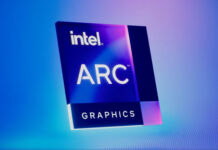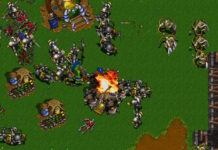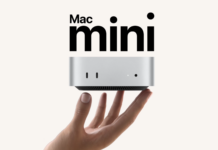What DirectX 11 means to games
To consumers it’s not very interesting to learn how DirectX 11 works or even what it means, all that really matters is that it results in some form of performance improvement or new graphical effects. We will take a look at some of the more exciting bits of DirectX 11 and their effect on games.
Compute Shader in the service of games
DirectX 11 requires that compatible GPUs support DirectCompute 11 and this is something that not only benefits the execution of heavy program calculations but can also be used in games. The Compute Shader can be dedicated to everything from physical effects to post processing and AI. Physical effects is very much in the news with NVIDIA PhysX and Havok that AMD supports. With DirectCompute and OpenCL it can handle physical effects even without these physics engines. Still, it’s all about the game developers and their ability to adopt the technology, but since AMD is aiming to have complete DirectX 11 coverage of the graphics market in 6 months it should be in the interest of the developers.
DirectX 11 likes multi-core processors
DirectX has since the dawn of time been designed for computers with single-core processors. Even if CPUs with two or four cores have become commodities DirectX has never been thoroughly optimized for multi-threading, which has meant that all of the load has been on a single processor core. Microsoft has done things differently with DX11 and now the interface supports multi-core processors to spread the load across more than one core and in the end generate better performance as the processor will not become the same bottleneck.

More polygons and more details with Tessellation
Tessellation is a technology that has been available for quite some time now. The concept first appeared with AMD’s TruForm technology back in 2001. Since then Tessellation has been integrated into Microsoft’s Xbox 360 through AMD’s Xenos GPU and it’s not the first time we hear praise for this “new” function.
The idea is to use Tessellation for recreating considerably more advanced characters and environments without the memory use skyrocketing. With substantially more polygons in the image you can create more realistic objects and simply make the graphics more true to real life.
Improved shadows and depth with post-processing
So called post-processing of rendered images have become a lot more efficient where filters can be applied to rendered images and create even more realistic shadows and fields of visions. E.g. Contact hardened shadows can be used for sharper edges near the object, and then fade as the shadow falls further from the object.
DirectX 11 enables game developers to create a lot more advanced characters and environments. At the time of writing there are no games with DirectX 11 support and in 2009 there will only be a few . This makes it quite difficult to pass any kind of concrete judgment. AMD did offer us the following table for a decent overview of future DirectX 11 capable games and graphics engines.

The games and graphics engines that are expected to support DirectX in the near future
We had hoped to test some DirectX 11 games before AMD’s launch of Radeon HD 5800 but when information of the DX11 version of BattleForge appeared we were only hours away from deadline and we had to postpone it for later articles.
Let’s move on to a technology AMD has developed for both gamers professional users, Eyefinity.























